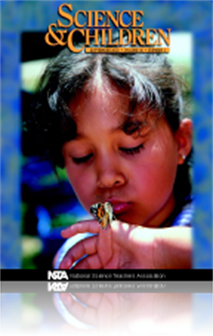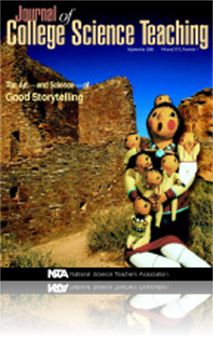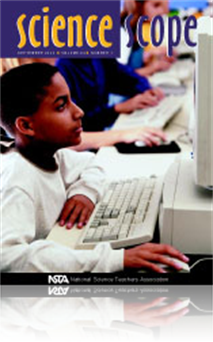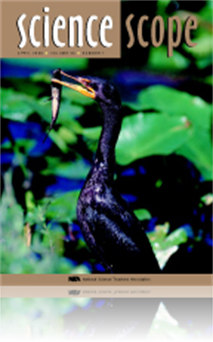All Resources
Journal Article
In these activities, students learn how to inquire about relevant issues, use evidence to make decisions about inquiries, and communicate those decisions. Integrated science courses in high school can be fundamental to students' learning processes. I...
Journal Article
In the fall of 1999, Science and Children extended an invitation to K–8 teachers to participate in a national study (Barman, Barman, Berglund, and Goldston, 1999). The main focus of this study was to examine students’ ideas about animals. This st...
Journal Article
Designed for use with small groups in an introductory geology class, this case study allows students to determine the relationship between sinkhole development and groundwater levels in Orlando, Florida. Students then apply the relationship to a laws...
Journal Article
To help teachers meet the need for a challenging inquiry-based science for high school students, particularly basic level integrated science, Cornell University developed a program called Environmental Inquiry (EI). The goals are to teach research an...
Journal Article
If the pressure’s on to enhance the growth and development of students’ inquiry skills, use a discrepant event. A discrepant event is a demonstration designed to present a situation or phenomenon that has an unexpected and sometimes very surprisi...
Journal Article
The traditional sequence for teaching science is biology first, then chemistry, and physics last. This article focuses on the Illinois State Board of Education's proposal for the development of a three-year coherent science curricula, with physics-fi...
Journal Article
Students build a Markov chain probability model of marriage and divorce using statistics—the chance of divorcing in a given year and the chance of divorcing eventually—from an article on the subject with the goal of learning to look at statistics...
Journal Article
Editor's Roundtable: Report on reform
Science Scope’s editor shares thoughts regarding the findings of a new report, What America Thinks About Science Education Reform....
Journal Article
Commentary: Community Learning
An opinion piece about the Department of Education's Smaller Learning Community Program (SLCP), which aims to stimulate a complete redesign of secondary education....
Journal Article
Editor's Corner: Achieving Standards Through Integrated Science
The Science Teacher’s editor shares thoughts on the current issue....
Journal Article
Teaching Teachers: Using Effective Demonstrations for Motivation
Presents practical teaching methods containing simple suggestions for classroom demonstration....
Journal Article
The Salton Sea is an accidental lake that receives used irrigation water from the Colorado River. Humans have profoundly altered the area’s ecosystems. The sea is important for wildlife and recreation but is now saltier than the ocean. How might it...
Journal Article
Lavosier Measures with Polymers
Measurement activities in middle school classrooms are usually lectures followed by an activity of measuring known samples. As an alternative, the author developed a creative, hands-on activity for teaching measurement skills inspired by Antoine Laur...
Journal Article
Studying Racial Bias: Too Hot to Handle?
Students evaluate a research proposal to determine if it is consistent with ethical principles and federal guidelines for the conduct of research with human subjects. The case can be taught either as a discussion case, as described here, or using rol...
Journal Article
Breathing Easy About New Air Pollution Standards
A town hall meeting is the backdrop for a role-playing case about ground-level ozone air pollution. The case consists of a flier and scripts drawn from public comment records on the current government mandate to reduce ground-level ozone by limiting ...
Journal Article
Forensic science is appealing because people want to be "detectives" in the general sense. This has resulted in an explosion of interest in the study of forensic science. This interest makes it an effective mechanism for teaching integrated science, ...
Journal Article
It’s show time for eighth grade physical science students after a week of designing, building, and refining Conversion Contraptions. The contraptions are fun combinations of moving parts that use many forms of energy and many conversions of energy....
Journal Article
Designed to help nonscience majors learn about motion, forces, and kinetic energy, students reconstruct a rear-end car accident that takes place in an intersection outside their classroom. They then explore the relationships between the speed of a ve...
Journal Article
The Science and Math Investigative Learning Experiences (SMILE) Program, a pre-college program at Oregon State University, developed an educational framework that enables teachers and students to adopt an integrated science format for studying local ...
Journal Article
The Webb Schools break down the barriers that deter intelligent young women from studying science. The GIRLS Science Camp (GIRLS stands for gifted, intelligent, real-life scientists) is a week-long program where a select group of female high school ...
Journal Article
Puppets and Prose: Using puppets and children's literature in the science classroom
Adding puppets and children’s literature to the science classroom makes learning entertaining and motivating. Realistic puppets hold children’s attention and actively engage their natural curiosity as they learn about animals and insects. A mini,...
Journal Article
The concept of evolution has been an important part of biology curricula, especially in high school, since the 1960s. Nevertheless, teaching the subject continues to be controversial because of the efforts of creationists to have "creation science" t...
Journal Article
A Reflection on <em>Rocket Boys/October Sky</em> in the Science Classroom
As the author of Rocket Boys: A Memoir, Homer H. Hickam, Jr. received thousands of letters and e-mails from fans, including many science teachers at both the secondary and college levels, who have decided to use his work, including the spin-off movie...
Journal Article
The Dirt on Outdoor Classrooms
Tired of hauling materials into the schoolyard for outdoor science activities? Why not dig up what you need to create a permanent, central, outdoor space that lends itself to integrated learning? This article describes the three main components that ...
Journal Article
The Color of Soil: Exploring the chemistry of soil color
Soil color is a study of various chemical processes acting on soil. These processes include the weathering of geologic materials, the chemistry of oxidation-reduction actions upon various minerals of soil, and the biochemistry of the decomposition of...
Journal Article
The goal of educational reform in the United States is to shift from the dominant method of teaching facts to emphasizing higher-order cognitive skills (HOCS) learning. Outlining the benefits and feasibility of implementing HOCS-style learning, the a...










